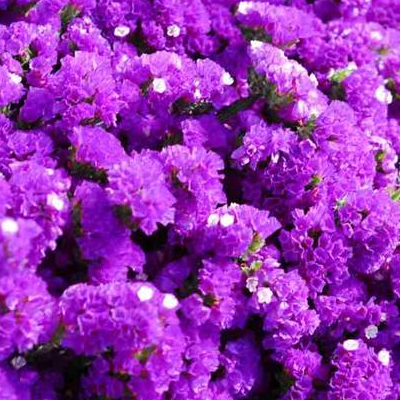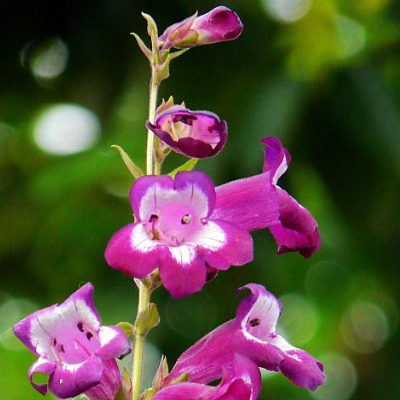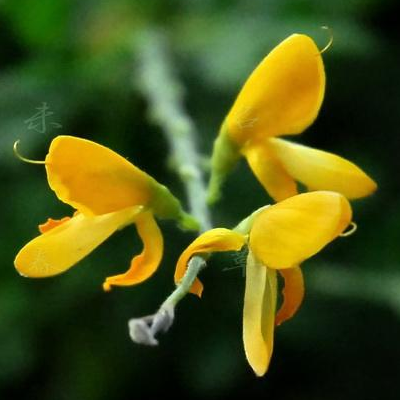Is the planting method of Buxue grass also called forget-me-not?
Limonium, this is a plant, this Limonium is a lot of people are super like breeding, this Limonium planting method is what kind of? Is it also called forget-me-not:

Cultivation methods of Limonium:
1. Selection of soil and fertilizer
Limonium needs soft soil, you can choose disinfected decaying leaf soil or peat and pearlite in a ratio of 1:1 evenly mixed; Limonium has a high demand for boron, so adding borax to the base fertilizer can effectively adjust soil fertility and adjust soil pH value. Diluted soybean cake water and available nitrogen, phosphorus and potassium can be used indirectly as topdressing.
2. Temperature control
Limonium needs to undergo low temperature vernalization treatment after sowing, which is conducive to flowering; sowing at 18-21℃ in autumn, usually about 5 days can sprout, after germination, the seedlings can be placed at a low temperature treatment below 16℃, and then placed at normal temperature for maintenance after 3 days.
The seedlings can be divided when the first true leaf appears, and the seedlings can be planted when the leaves reach 5~6 pieces. Generally, the planting is carried out in October-November, the flowering period is June-August, 18~20℃ in the daytime, 10~15℃ at night is appropriate, and the minimum temperature cannot be lower than 0℃.
3. Light control
Limonium needs a ventilated and transparent environment, which can effectively reduce the occurrence of diseases. Cultivation methods can be selected from two-row cross planting or three-row planting. Plum blossom planting is also common in field planting. Limonium likes light, so pay attention to light in the process of planting. Of course, exposure is not allowed, summer noon needs shade treatment.
4. Late maintenance
Limonium inflorescences bloom and grow in the exuberant period, water and fertilizer supply must be sufficient, otherwise it is easy to cause short flowers, flowers do not flourish. In order to prevent lodging, it is necessary to pull nets or erect pillars to grow and bloom in Limonium. After harvesting the first crop of flowers, remove the old branches and dead leaves in time to promote the germination of new buds and avoid consuming more nutrients. It should be noted that Limonium is a straight root plant, which must be transplanted with soil at the seedling stage to prevent root injury and improve survival rate.
Is it also called forget-me-not:
Limonium of Plumbago is also called forget-me-not when it is used as a cut flower.
About the breeding method of Limonium introduced here, this Limonium whether can be called forget-me-not, this depends on the variety.
Forget-me-not is called Limonium, Forget-me-not Flower
Flower bonsai net guide, the following flower bonsai net small series for everyone to share is about forget my other name blood grass, forget me flower language article, let's take a look.
Forgetfulness herb (scientific name: Myosotis sylvatica), also known as forget-me-not, is a plant belonging to the genus Myosotis in the Arneaceae family.
It is distributed in Europe, Iran, Russia, Pakistan, Kashmir, India and Jiangsu, Northwest, North China, Sichuan, Yunnan, Northeast of the mainland of China. It grows in areas with an altitude of 200 meters to 4, 200 meters. It is mostly born in mountain forest margins, hillsides, forests and valley grasslands. At present, it has not been artificially introduced and cultivated.
Forget-me-not is a small pale blue flower with five petals and no fragrance. Although ordinary, but couples are willing to tie them into a bunch of gifts to their lovers, in order to express deep love.
Although forget-me-not is also called Limonium, in fact, there is also a plant called Limonium sinense (scientific name: Limonium sinense), which is a plant species under the genus Limonium of Plumbago.
forget me not
Forget-me-not, also known as glass grass, forget-me-not grass, winged stem limonium, star flower, limonium, non-withered flower, spoon leaf flower, stevia, pine, is a plant belonging to the genus forget-me-not of the Arneaceae family.
Morphological characteristics of forget-me-not
Forget-me-not is a biennial herb, 30-60cm tall. Leaves simple and alternate, leaves oblanceolate, lower leaves stipitate, upper leaves sessile, racemes terminal, 10-15cm long; calyx small, 5-lobed; corolla high peduncle saucer-shaped, lobes 5, blue, pink or white, throat yellow. Flowering April-May, nutlets brownish green, fruiting May-June.
Forget-me-not habits
Forget-me-not is adaptable, likes dry and cool climate, avoids damp heat, likes light, droughts, and grows at a temperature of 20℃-25℃. Suitable for growth in loose, fertile, well-drained slightly alkaline soil.
Forget-Me-Not Flower
Forget-me-not flower language is, eternal love, friendship, never changing heart. Forget-me-not is the love of flowers. Legend has it that in ancient Europe, there is a knight with a beloved lover in the seaside tour, his lover saw a bunch of flowers stand upright in the water, want to pick under the insert, knight to win her favor, wading to pick, but was surging tide roll away. Before he was swept away, he threw the flowers on the shore and shouted to his lover,"Don't forget me!" Since then, this flower will be named forget-me-not, as a token of love, loved by lovers.
Forget-me-not varieties and their effects
Forget-me-not variety.
Algeria species, orange flowers, plant height more than 1 m, plant type scattered thin, colorful, early flowering, the longest color retention time.
Deep wave leaves, purple flowers, plant height nearly 1 meter, plant type compact, stem hard and stout. In addition, there are other color varieties, blue, white, orange red, yellow, pink, reddish, purple, blue and so on.
Forget-me-not varieties can also be divided into early-maturing and late-maturing two. Early maturity varieties are early blue, gold shore, blue pearl and so on. Mid-late maturing varieties are iceberg, night blue, blue velvet and so on. Growers should fully understand the variety characteristics and market demand in order to select suitable varieties.
Forget-me-not works.
Ornamental role: forget me flowers small and delicate, a variety of colors, although ordinary, but couples are willing to tie them into a bunch of gifts to their lovers to express deep love. Forget-me-not is often used as a cut flower. At present, what is sold in flower shops is not the real forget-me-not, but the blood herb. The blood herb. is regarded as forget-me-not for sale only because of its beautiful meaning.
Forget-me-not flower tea: forget-me-not flower tea can be made into drinking, with nourishing yin and kidney, beauty, blood and nourishing, and can promote the metabolism of the body to delay cell aging, delay cell aging, improve immunity, anti-virus, anti-cancer and anti-cancer effects. it can be use for treating blood tonic, menstruation regulate, skin caring, fire-clearing, eyesight improving, freckle, acne, low immunity, viral infection, cardiovascular and cerebrovascular insufficiency, etc.
How to grow forget-me-not?
The forget-me-not sold on the market is actually a kind of blood tonic. As its name suggests, forget-me-not has the effect of enriching blood. Forget-me-not also has the effect and effect of nourishing yin and kidney, beautifying beauty and nourishing eyes. The effect of forget-me-not is so good. So, how do I keep it? The following small series will share with you the planting method of forget-me-not.
Forget-me-not is adaptable, likes light, drought-tolerant, blooms brightly in sunny conditions, but avoids high temperature and humidity in summer. The optimum temperature for the growth of forget-me-not is 22-28℃, and it is semi-dormant above 30℃. Forget-me-not likes fertile, well-drained sandy loam.
Forget-me-not varieties have early maturity and late maturity two kinds, early maturity varieties have early blue, gold shore, blue pearl and so on. Late-maturing varieties are iceberg, night blue, blue velvet and so on. Forget-me-nots can be planted in April and June, flowering in autumn and lasting until spring.
Cultivation of annual forget-me-not, in summer to do a good job of shade cooling, winter to do a good job of heat preservation measures. Forget-me-not biennial cultivation can be planted in October to December, without heat preservation measures, so that forget-me-not seedlings will bloom in the next spring after induction at low temperature in winter, and the flowering period will continue until winter.
Planting: Do not forget that I like dry, fertile, breathable, slightly alkaline sandy loam. Forget-me-not soil can mix decomposed organic fertilizer and slow-acting compound fertilizer evenly into the soil. The optimum plant spacing of forget-me-not was 30cm×40cm, and the planting depth was slightly higher than root neck.
The temperature of forget-me-not should be kept below 15℃ for 2 months after planting, so as to facilitate the plants to pass the vernalization stage and facilitate the normal growth and flowering of forget-me-not.
Light: Do not forget that I like plenty of sunshine, but avoid high temperature and high humidity, so in peacetime to give adequate light forget-me-not, insufficient light will lead to forget-me-not lush foliage, affecting flowering, or even flowering, but summer to do a good shade measures.
Temperature: The optimum temperature for the growth of forget-me-not is 22-28℃, and the temperature above 30℃ or below 5℃ is unfavorable for the growth of forget-me-not. Therefore, forget-me-not planted in spring and summer, when the seedlings are not treated with low temperature, it is necessary to postpone the time to enter the greenhouse, so that they can fully accept the low temperature and complete the vernalization.
Watering: planting forget-me-not must be equipped with drainage facilities to prevent waterlogging. Forget-me-not likes soil micro-tide, but avoid root water, usually try to keep the soil in micro-tide bias state.
Fertilization: Before planting forget-me-not, the soil should be applied with sufficient basal fertilizer, preferably 50 kg/mu, and deeply ploughed into the soil. When forget-me-not produced 6-8 leaves, 0.1% urea solution was added once, and when forget-me-not produced flowers, 0.1% potassium dihydrogen phosphate solution was applied 2-3 times.
Diseases and pests: Do not forget the disease gray mold, powdery mildew, virus disease and so on. Gray mold can be used 800-*** chlorothalonil, thiophanate-methyl spraying 3-4 times. Powdery mildew can be controlled by spraying with fenxiuning, virus diseases are mainly controlled by pulling out diseased plants and burning them in time, spraying insecticides to prevent insect transmission, etc.
Forget-me-not breeding methods
There are two propagation methods of forget-me-not: sowing propagation and tissue culture seedling. Forget-me-not seeds are generally sown and propagated from September to January of the following year. Under the temperature condition of 20℃, forget-me-not seeds will germinate in 5-10 days.
Forget-me-not sowing should pay attention to the temperature not to exceed 25℃, after germination should pay attention to ventilation, seedlings can be transplanted when more than 5 leaves. The forget-me-not tissue culture seedlings cultivated by tissue culture technology can be planted when the seedlings have 4-6 leaves.
Forget-me-not planting methods introduced to this, I hope to be able to help you, welcome to continue to pay attention to the fleshy flower beds, learn more about the conservation of herbal flowers knowledge.
- Prev

What are the matters needing attention in the flowering maintenance of fishing bell willow?
Fishing bell willow, this kind of plant is really super beautiful when it blossoms. When is the florescence here? What are the precautions for the maintenance of the fishing bell willow flowering period: the florescence of the fishing bell willow can actually be divided into two stages, one in spring and the other in summer and autumn.
- Next

How long does it take to make Caragana bonsai?
Caragana, this is a kind of plant, this Caragana is still very good-looking, the flowers are yellow, what is the method of making bonsai
Related
- Fuxing push coffee new agricultural production and marketing class: lack of small-scale processing plants
- Jujube rice field leisure farm deep ploughing Yilan for five years to create a space for organic food and play
- Nongyu Farm-A trial of organic papaya for brave women with advanced technology
- Four points for attention in the prevention and control of diseases and insect pests of edible fungi
- How to add nutrient solution to Edible Fungi
- Is there any good way to control edible fungus mites?
- Open Inoculation Technology of Edible Fungi
- Is there any clever way to use fertilizer for edible fungus in winter?
- What agents are used to kill the pathogens of edible fungi in the mushroom shed?
- Rapid drying of Edible Fungi

